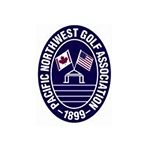Handicap Hub: Take It to the Max
By Kelly Neely, Sr. Director, Handicapping & Course Rating
Click Here for Handicap Hub Archives
I have to admit that I do appreciate a great handicapping question (which is fortunate, since my days are peppered with them). I especially enjoy ones that I’ve not heard before, as it gets the wheels churning and clears out the cobwebs.
Since the season just began, I thought I’d start this article off with a brand new query that has been popping up, no doubt due to reasonable confusion between Maximum Score (Rules of Golf) and Equitable Stroke Control (Handicap System). Questions have come in a couple of forms:
- Q1: Is “Maximum Score” replacing “Equitable Stroke Control”?
- Q2: How, if at all, is score posting done if using the new Maximum Score format?
The first answer is an easy one: No, new Rule of Golf 21.2 is simply a format of stroke play, and has nothing to do with Equitable Stroke Control, which is one of the three ways to adjust a hole score for handicap purposes (USGA Handicap System Section 4 Adjusting Hole Scores). The second answer requires more detailed explanation and I will endeavor to keep us from going down the Handicapping Rabbit Hole (a place from which we might never be seen or heard from again).
Score posting would certainly be required when playing the Maximum Score format, but exactly what score would need to be posted? Under this format, the Committee in charge of the competition determines Maximum Score – this might be two times par, a fixed number, or net double bogey, for example.
Let’s say our player has a Course Handicap of 15, making his max for ESC a seven (Equitable Stroke Control Chart). The Committee has chosen two times par as Maximum Score, and have decided not to handicap the event. In addition, to help pace of play, the competitors are encouraged to stop playing a hole when the max is reached. Unfortunately our player is having a rough time with the bunkers on No. 10, which is a par 4. Just short of the green, he’s already hit his Maximum Score of eight. His only relief in that moment comes from seeing No. 10 in the rear view mirror as he moves on to No. 11 tee.
What hole score is recorded for our player? For the event, he receives an 8. However, for handicap purposes, he would log a 7. Remember that the purpose of ESC is to set a maximum when a player’s actual or Most Likely Score exceeds his ESC, in order to keep a bad hole from inflating his Index. Our player had already gone over his max ESC when he reached 8, therefore he adjusts downward to a 7 on No. 10.
RULE OF GOLF 21.2 | MAXIMUM SCORE
Pondering Maximum Score vs. Equitable Stroke Control led me to consider other procedures within the USGA Handicap and Course Rating Systems where a “maximum” concept is applied.
Maximum Handicap Index
The maximum Handicap Index is 36.4 for men and 40.4 for women. GHIN will calculate the player’s actual Index and will display above those numbers, but they will be identified as a local handicap by the letter “L” (ex. 41.5L). If local handicaps are used for inter-club play, the USGA recommends that they be reduced to the maximum Handicap Index as specified. That said, it is ultimately up to the golf club or Committee in charge of a competition to decide what limits, if any, are to be imposed on their players.
Maximum Number of Reduction Strokes
Trust me, no one likes their Handicap Index reduced for Exceptional Tournament Scores, but an Index lowered by the minimum one stroke is much easier to accept (there will be slightly less chance I will be chewed out) than the maximum 12.6 strokes (all hell breaks loose and I need a quick ticket out of town).
Maximum Obstacle Rating
Within the USGA Course Rating System, obstacles include trees, penalty areas, bunkers, crossings, and more. Each of these obstacles is rated on a scale of 0 – does not exist on the hole – to 10 – extreme significance. Courses in our region that have numerous significant obstacles are Crosswater (for forced water crossings, hence the name), Tetherow (a combination of water and extreme rough), and Skamania (trees!).
Maximum Yardages for Par
It’s imperative to keep in mind (and accept) that par is relational only to the scratch golfer and how far they hit the ball. Not to be callous, but it’s not about you (or your handicap, your age, et al). The maximum yardage for a par 3 is 250 for men and 210 for women. For par 4, max is 470 for men, 400 for women. And for par 5, men’s max is 690, women’s is 590 (the elusive par 6 won’t be mentioned). Doglegs and other course design factors can, of course, affect the final designation of par.
Maximum Number of Scores to Calculate an Index
An “optimal” scoring record is based on 20 rounds. Once a player reaches 20, their Handicap Index will always be based on the better half of their scores (as denoted by the 10 lowest handicap differentials, which is produced by a formula calculation – insert icky math here). The minimum number of rounds to calculate an Index is five 18-hole rounds and / or combined 9-hole rounds. The more often you post, the more likely your Index will be indicative of your peak performance. So if you’re just starting out, keep playing and posting! At each revision your Index will make more sense to you.
|
Questions? Contact Kelly in the OGA Handicapping & Course Rating Department at (503) 981-4653 x226 or Click Here to Email Your Question |








